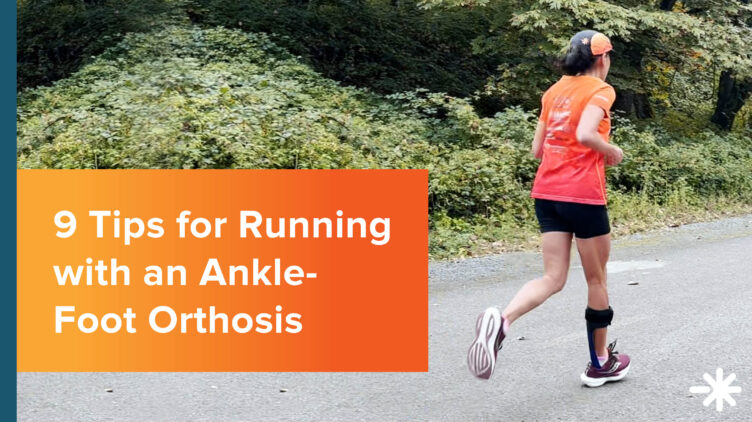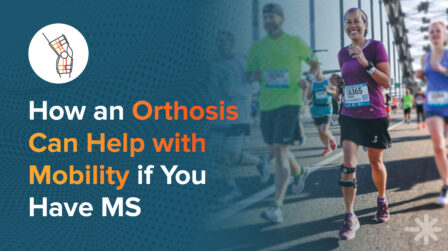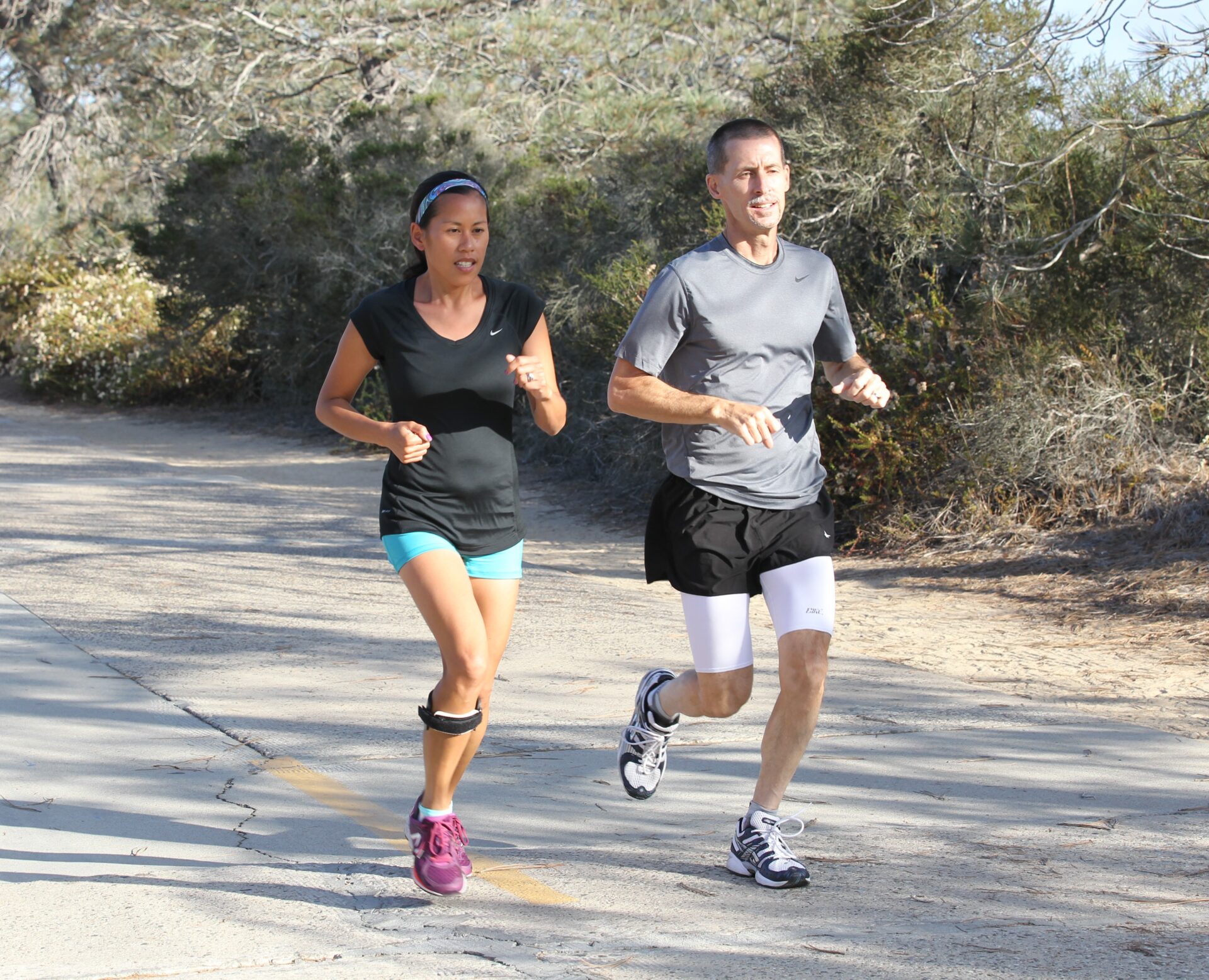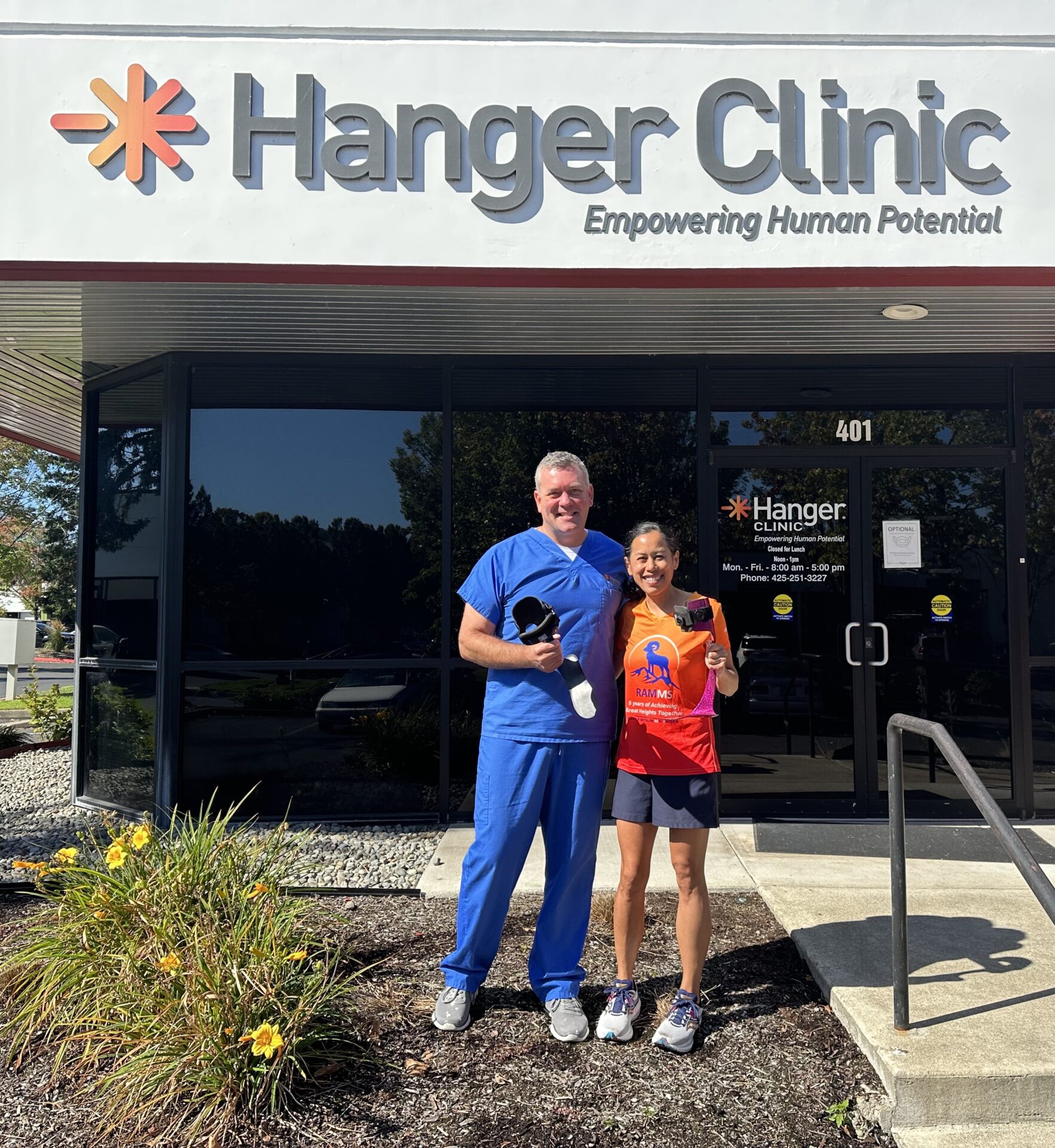9 Tips for Running with an Ankle-Foot Orthosis

Running with an ankle-foot orthosis (AFO) can be an intimidating experience, but it doesn’t have to be. Cheryl Hile, founder of Run a Myelin My Shoes (RAMMS), has been living with multiple sclerosis (MS) and uses an AFO for foot drop. She is an avid runner and uses her custom AFO to her advantage when she hits the pavement. After completing seven marathons on all seven continents, Cheryl shares tips for those just starting out or looking to pursue a marathon with their AFO.
1. AFO Type and Fit
To start, if you are someone who utilizes an AFO and are interested in enhancing your mobility, you will need to first consult with your physician to make sure it’s safe to start an exercise program. If appropriate, your doctor will write a prescription for a new AFO, and your orthotist will be the one to fill that prescription. Not all AFOs are designed the same. If you plan to incorporate running into your exercise routine, consult with your orthotist about the best brace for you.
Cheryl shared, “My first AFO was off the shelf, meaning pre-made AFO. Despite the adjustments my orthotist made, my foot was still slapping hard on the ground during long runs. I worked with my Hanger Clinic orthotist and, in the end, a custom AFO better met my needs. I recommend bringing a few pairs of your favorite running shoes to your appointment so your orthotist can see the wear pattern on the bottom of your shoe to help with the customization of your AFO.”
2. Start with Short Distances
Always warm up before you run. When you begin running with your AFO, start slow with shorter runs and ease into longer runs, getting used to the brace and how it affects your movement. Consider starting on a treadmill.
“I suggest building your mileage up slowly and doing test runs on the treadmill. I know running on a treadmill might sound boring, but having that smooth, flat surface creates a good environment to do test runs with your AFO and gives you an opportunity to address any issues you may experience,” said Cheryl.
3. Enhancing Form
To start, aim for shorter strides and try to avoid landing on your toes. Focus on form, foot placement, and stride. A physical therapist or running coach can help guide you to proper form. When running long distances, it may be possible to find areas where the AFO causes bruising or the foam padding from the AFO causes chaffing from rubbing on the skin. Consider anti-chaffing ointment or wearing a long running sock or compression sleeve to act as a barrier.
Cheryl said, “If anything feels out of place when I am running, I begin by adjusting the tightness of my brace and shoes. I have experienced chaffing on my calf area during runs. My orthotist relined the cuff with a softer and smoother foam pad. For the times I still experience irritation, like on some very long runs or in the rain, I use petroleum jelly or an anti-chaffing ointment. I also carry a small tube of anti-chaffing gel in my pocket for marathons and half marathons in case I need it.

I’ve also experienced discomfort in my metatarsal when running. My orthotist provided me with a pad to help alleviate my discomfort. If you feel pain, consult with your orthotist so they can help you.”
Mobility and MS
Discover how an orthosis can help with mobility if you have MS or other conditions that may require some help with an AFO.

4. Choosing the Right Footwear
Select running shoes that offer good support, cushioning, and room for the brace. Consider sizing up or buying a wider shoe to accommodate the extra space an AFO will take up in your shoe. Additionally, try different lacing patterns to enhance fit and comfort.
Cheryl shared, “My normal size is a seven and a half, but I buy an eight wide. If you find that your non offensive foot does not like running in a larger shoe, Zappos allows you to buy a different size shoe for each foot. Lacing patterns can also change the fit. For me, I experienced some tightness and discomfort on the side of my foot and heel slipping because of the strut. In my shoes, I skip the first holes to help relieve some of the pressure on the side of my foot and I use the heel lock lacing technique to keep my heel secure and tightly in place.”
5. Navigating Different Terrain
The type of terrain can influence the comfort of your AFO and run.
“There are many types of surfaces, and they can influence your run. For example, there are hilly roads, hard concrete surfaces, heavily cambered roads where you run sideways, uneven terrain, and more. Find a surface type that works best for you. If you experience discomfort, take meticulous notes about where the discomfort is, shoes you are wearing, and types of surfaces you are running on. If you find a surface that is regularly causing discomfort, work with your orthotist so they can make any necessary adjustments and ensure your style AFO is the best fit for your activity,” said Cheryl.
6. Running Buddy
Help yourself stay motivated by finding a running buddy or group who can motivate and inspire you.
“There are other people out there who may or may not wear an AFO but are looking for the same inspiration as you. It may be a friend, neighbor, or organized group. For me, this is my husband and friends in RAMMS. Having others around you with similar aspirations to help motivate you on the hard days or be there just to support you when you can’t make it through a run will keep you taking the next step,” shared Cheryl.

7. Proper Nutrition
Diet is an important component of the overall marathon training plan. The key is to stay properly hydrated and fueled, both before and after the race. This will vary depending on the length of your run as you train. During marathon training, it’s important to add extra carbohydrates as well as extra protein to your diet. The night before a race, eat a meal rich in carbohydrates and protein.
Cheryl said, “My preferred food before a run just depends on the distance. For an everyday 3-to-5-mile run, I’ll just have some cereal. For a longer run, like a marathon, I’ll have something with more substance, like plain oatmeal and a banana. I usually try to stick to plain foods that are easy to digest because I don’t want to upset my stomach.
The day before a marathon, I prefer to stay off my feet and keep my activity for the day under one mile. I know others who go for an easy 5K run. I also prefer to eat small meals throughout the day that are mostly focused on carbs and some protein to slow digestion.
When we travel for a race, I still stick to familiar foods the day before and the morning of the race. I don’t want to upset my stomach for race day, but afterwards I’ll treat myself.”
8. Listen to Your Body
Running with an AFO takes time and patience.
Cheryl said, “It is a foreign object inside your shoe. You will likely need to visit your orthotist for adjustments. But once you become comfortable with your device, you’ll hopefully forget that you’re wearing it.
Also remember that exercise and staying active is a lifelong pursuit. It’s not just about one race or one cycling event. I am always creating goals. My goals have shifted through the years because of my disease progression. My right thigh is now much weaker, it’s harder to lift my leg, and I’m always battling MS fatigue, but having goals keeps me focused and drives me to push myself forward and be as active as possible.”
9. Consult with your Orthotist
Before you begin running, and if after you start running you experience any pain or discomfort, consult with your orthotist. They can help you choose the right orthosis and ensure it is properly fitted to your needs.
“Through the years, my orthotist has helped me with things like metatarsal pads, heel lifts, and even custom orthoses. Additionally, if you experience running injuries or disease progression, reach out to your orthotist and keep them informed. My orthosis has really helped me stay in the running game, and I’m just so appreciative of my orthotist and the technology.
And give yourself grace. Even if I’m having a hard day, I still try to do something. For instance, if you have a three-mile run on your schedule, but you are feeling too fatigued, still try to do something that you know you can manage. Like maybe going out for a walk around your neighborhood with a friend or doing breathing and stretching exercises at home.

My mantra is ‘I do what I can, and I never give up’. Just doing something good for your health that day will make you feel better and realize that you are stronger than your disease. Remember, your AFO is supposed to empower you, not discourage you.”
About RAMMS
Run a Myelin My Shoes (RAMMS) is a team of MS warriors and MS supporters including family, friends, and advocates. Their goal is to support each other as athletes living with MS and to motivate others to exercise to the best of their ability despite a disease that compromises mobility. Since 2018, they have grown to over 300 members and cumulatively, they have represented 32 countries on all seven continents, including Antarctica.
Request a Free Evaluation
If you or someone you love are looking for personalized, high-quality care, get in touch with a board-certified orthotist at a Hanger Clinic near you.
Latest Updates
Subscribe to stay up-to-date on our latest posts.


